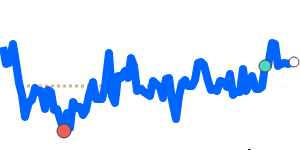The recent outlook for the USD to HUF exchange rate suggests a complex interplay of factors that could impact the currency pair moving forward. Analysts note that the US dollar has shown signs of recovery after reaching multi-month lows, boosted by investor demand even as expectations for aggressive rate cuts from the Federal Reserve have pressured its value. Mixed economic data from the U.S. indicates slowing growth and cooling manufacturing activity, which could further contribute to downward pressure on the dollar. Economists anticipate a potential dip in the USD following the upcoming Empire State manufacturing index release, which is expected to reflect a slowdown in factory activity.
Simultaneously, the Hungarian forint (HUF) benefits from a strengthening position due to a recently secured financial shield agreement with the U.S., aimed at bolstering Hungary's economy amid challenges. The National Bank of Hungary has maintained its key interest rate at 6.5%, indicating a commitment to stringent monetary policy for price stability. This action, along with the expected financial assistance from the U.S., may lend support to the HUF.
Current USD to HUF trading is experiencing stability near a 14-day high of 331.4, just below its three-month average. Analysts have observed that the pair has been trading within a narrow range of 3.8% over recent weeks, highlighting market stability. However, with mixed signals from the U.S. economy and geopolitical influences, particularly regarding broader risk sentiment, the USD's upside potential appears limited.
The outlook remains fluid, with particular attention needed on future U.S. economic data and the Federal Reserve's communication around interest rates. As these elements unfold, they will crucially shape the trajectory of the USD against the HUF.

